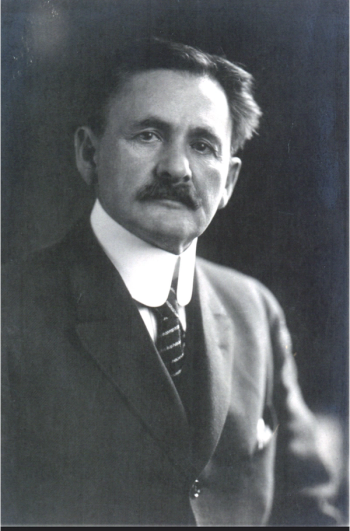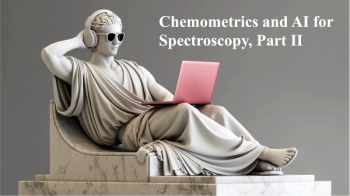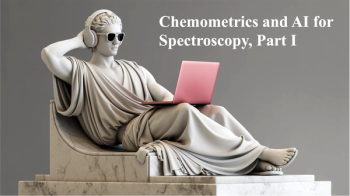
Ultraviolet Resonance Raman Spectra Reveal Distinctive Features of Serum Albumins
Researchers from Humboldt-Universität in Berlin have utilized ultraviolet resonance Raman (UVRR) spectroscopy to differentiate between bovine serum albumin (BSA) and human serum albumin (HSA) based on their similar structures and amino acid composition. By comparing the UVRR spectra of the proteins with those of specific amino acids, they have identified distinctive features that allow for accurate discrimination and provide insights into the secondary structure and binding sites of serum albumins.
Researchers from the Department of Chemistry at Humboldt-Universität in Berlin, Germany, have utilized ultraviolet resonance Raman (UVRR) spectroscopy to distinguish between two closely related serum albumin proteins and obtain valuable insights into their structure. Led by Janina Kneipp, the study aimed to differentiate bovine serum albumin (BSA) and human serum albumin (HSA) based on their similar amino acid composition and structure, while also measuring signals from the low-abundance amino acid tryptophan.
Serum albumin, the most abundant protein in vertebrate blood, fulfills crucial roles as a carrier and in interactions with external molecules. Raman spectroscopy has been extensively employed to investigate the structural characteristics of serum albumins and their interactions with drugs and nanomaterials. In this study, the researchers employed UVRR spectroscopy, which enables selective enhancement of specific vibrational signals, to gain deeper insights into the two serum albumins.
UVRR spectroscopy selectively enhances specific chromophores and vibrational modes by utilizing resonant excitation in the ultraviolet (UV) region, providing information on the structure, conformation, and interactions of molecules (1). By matching the Raman excitation wavelength to the electronic transitions of target chromophores, UVRR spectroscopy enhances their Raman scattering signals, providing selective detection in complex mixtures. This technique is particularly valuable for studying biomolecules like proteins, as it reveals details about their secondary structures, binding sites, and molecular interactions. Specialized instrumentation is necessary for UV excitation and sensitive Raman signal detection, supporting advancements in various fields, including medicine and biotechnology.
The comparison of the UVRR spectra of BSA and HSA in aqueous solutions with those of tryptophan, tyrosine, and phenylalanine in equivalent ratios demonstrated that the spectra were dominated by resonant contributions from these three amino acids. By using an excitation wavelength of 220 nm, the researchers were able to observe pronounced bands related to fundamental vibrations of tryptophan, with BSA showing a strong enhancement due to the presence of two tryptophan residues, while HSA exhibited a single enhanced tryptophan band (1). The overtones and combination bands of tryptophan had a minor influence in the spectral range above 1800 cm–1. In this range, the spectra primarily indicated the overtones and combination bands of phenylalanine and tyrosine.
The study also identified and assigned the spectral features in the Raman shift range of 3800 to 5100 cm–1 to combination bands comprising the fundamental and overtone vibrational bands of tyrosine (1). The researchers supported their assignments by analyzing spectra of amino acid mixtures containing deuterated tyrosine. The high-frequency region of the UVRR spectra holds valuable information that complements near-infrared absorption spectroscopy for protein analysis.
UVRR spectroscopy offers distinct advantages for investigating serum albumins. Resonant excitation in the UV range enables selective enhancement of specific vibrational signals, providing valuable insights into protein structure and secondary structure elements. The UVRR spectra obtained from serum albumins, particularly in the deep UV region around 200 nm, provide information about the protein's secondary structure (1). Moreover, longer UV wavelengths emphasize the contributions of aromatic amino acid side chains, which are often involved in ligand binding or indicate structural differences among serum albumins from different species.
The findings of this study contribute to the body of knowledge surrounding UVRR spectroscopy and its application in studying serum albumins. By distinguishing between BSA and HSA and elucidating the distinctive features of their spectra, researchers gain a deeper understanding of these protein structures and their interactions with other molecules. This knowledge could facilitate further investigations into drug-protein interactions, protein-ligand binding, and the structural differences of serum albumins from various molecular species. UVRR spectroscopy continues to demonstrate its potential as a powerful tool for protein structural studies and offers new avenues for exploring the intricate world of protein biomolecules.
Reference
(1) Spedalieri, C.; Plaickner, J.; Speiser, E.; Esser, N.; Kneipp, Ultraviolet Resonance Raman Spectra of Serum Albumins. Appl. Spectrosc. 2023, 0(0). DOI:
Newsletter
Get essential updates on the latest spectroscopy technologies, regulatory standards, and best practices—subscribe today to Spectroscopy.





